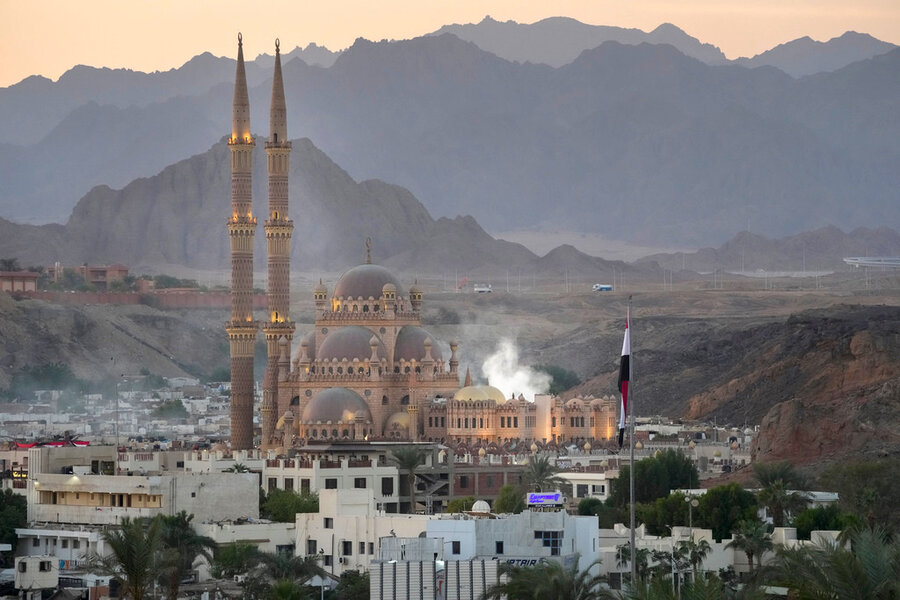Alternate atmospherics at this year’s climate confab
More than 30,000 people are expected to arrive on the southern tip of the Sinai Peninsula in Egypt next week – government officials, industrialists, scientists, and activists – all gathering in the singular, serious business of dealing with climate change. Frustration has been high ahead of this latest global conference on the issue, the 27th convened by the United Nations since 1995. Greta Thunberg decided not to be there. British Prime Minister Rishi Sunak wasn’t planning to attend until public pressure changed his plans.
One reason for the sour mood is that weather disasters seem more frequent and intense while progress on carbon emission goals remains slow. Wealthier countries are also not delivering on promises to pay poorer nations for the “loss and damage” caused by the climate effects of their earlier industrialization.
Feelings of anger and fear have come to dominate the annual climate confabs. These summits “have a culture which is zero-sum, hostage-taking, bargaining, negotiating games,” Alden Meyer, a policy analyst at E3G, a London-based climate change think tank, told The New York Times.
Yet beyond the contentious policy arena, a diversity of thinkers in science, philosophy, and religion is suggesting a recognition of different mental frameworks – ones that view a warming atmosphere less as a problem of moral action than as a call for a new mental atmosphere.
“Solving the problem of climate change will not be successful if we allow our fears to overcome us,” Tyler Giannini, co-director of the International Human Rights Clinic at Harvard Law School, told The Harvard Gazette in April. “Solving the problem will require the strength, commitment, and creativity of our global community.”
Much of that creativity involves efforts, stirred by climate change, to reconcile science and religion. These discussions are emerging from diverse places, from Harvard’s Divinity School to The Nature Conservancy. In Indonesia, a program started earlier this year by the Center for Islamic Studies at the National University has introduced a climate change curriculum at 50 Islamic boarding schools. The curriculum is designed to instill in students an approach to environmental stewardship rooted in Islamic values.
Measures like these reflect an intent to draw on the diversity of religious values to help the world cope with the effects of climate change. Yet they may be knocking on the door of something more profound – an approach that the late French thinker Bruno Latour described as the “new climate regime,” a challenge so difficult that it calls for new ways of thinking about material assumptions.
That perspective will be at work on Nov. 13 during the two-week climate conference in Egypt. Representatives of the world’s major religions will gather at Mount Sinai, the site of Moses receiving the Ten Commandments, to collectively affirm the utility of spiritual laws for the world’s response to climate change. Their gathering is not a passive petition for divine intervention. It is, as the various organizers put it, a “calling for reexamination of deep-seated attitudes and for identifying ways to transform these attitudes for the wellbeing of Earth.”





